April 10, 2018
We knew from our visit to the state history museum that the city of Gonzales, about 30 miles south of McMahan, had played a significant role in the Texas revolution so we checked it out. The drive was pleasant: Primrose, Indian paintbrush and Indian blanket (gaillardia) lined the highway.
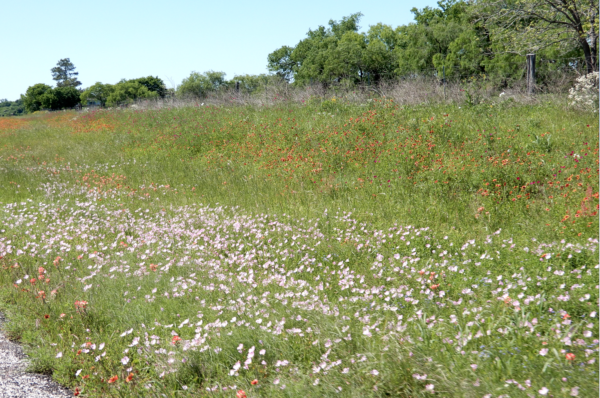 In Gonzales, we found buildings from the late 1800s and a square honoring Texas heroes.
In Gonzales, we found buildings from the late 1800s and a square honoring Texas heroes.
The courthouse was built in 1896 in a Romanesque Revival style. It is red brick with white limestone trim.
The Gonzales County jail was built in 1887 and used until 1975. It is Italianate style Victorian architecture.
We visited the Gonzales Memorial Museum and Amphitheater where we saw the cannon over which the first battle for Texas independence was fought against Mexico.
Mexico had provided the cannon to Gonzales in 1831 for defense against the Indians. When residents of the area began to voice disagreement with Mexico’s central government, Mexico asked that the cannon be returned and sent a corporal and five soldiers to retrieve the weapon. The settlers refused to give up the cannon and buried it. Next Mexico sent 100 soldiers but they were unable to cross the Guadalupe River because the citizens of Gonzales had hidden the ferry. A few days later, they dug up the cannon and met the Mexican forces six miles upstream. Over the cannon, the settlers waved a flag daring the soldiers to “Come and Take It”. They fired the cannon and the Mexican troops retreated.
The cannon involved is small and was more likely to have been used as a signaling device than as a weapon.
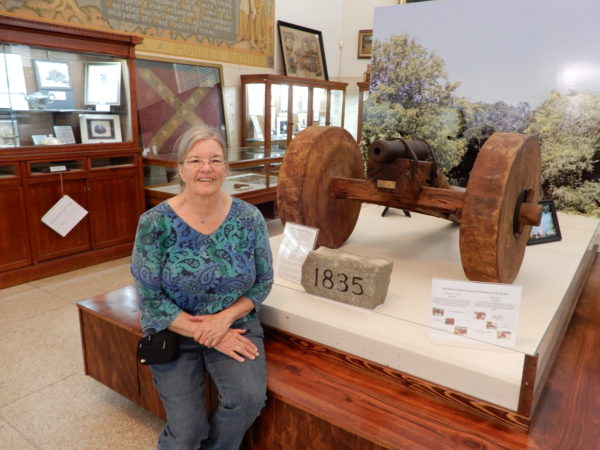
Jane giving perspective to the cannon’s size. The caisson on which the cannon rests is a recreation.
The grounds contain a memorial to the “Old 18” who initially refused to yield the cannon until reinforcements could be gathered.
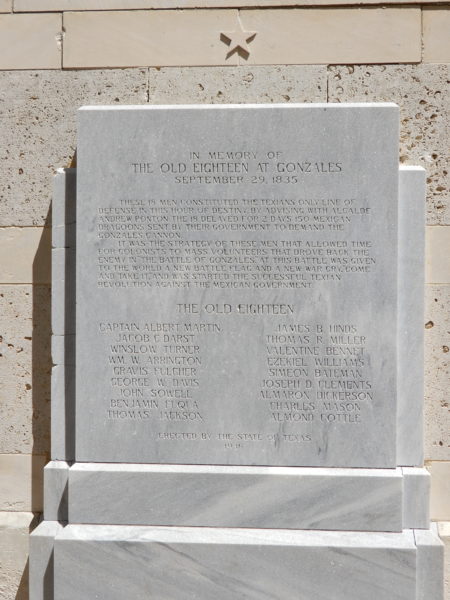
“These 18 men constituted the Texans only line of defense in this hour of destiny. By advising with Alcade Andrew Ponton, the 18 delayed for 2 days 150 Mexican dragoons sent by their government to demand the Gonzales cannon.”
The property also is home to a memorial to “The Immortal 32”, men from Gonzales who died at the Alamo.
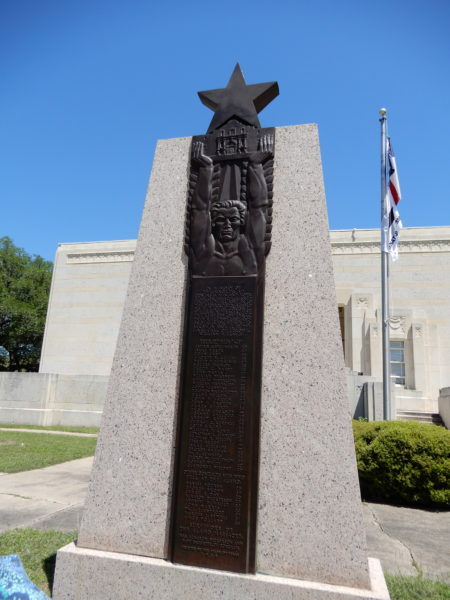
“In memory of The Immortal 32 Gonzales men and boys who, on March 1, 1836, fought their way into the beleaguered Alamo to die with Colonel William B. Travis, for the liberty of Texas. They were the last and only reinforcements to arrive in answer to the final call of William B. Travis”
The museum was in two separate wings. The cannon and artifacts from the revolution era were in one, and artifacts from the area and everyday life were in the other.
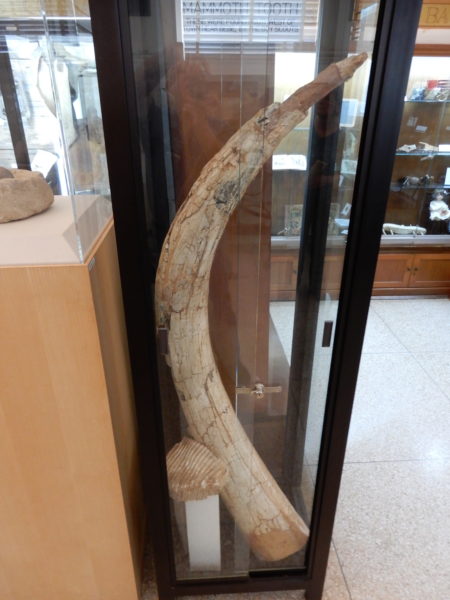
A mastodon tusk and a mammoth tooth from 10,000 years ago, found in the Gonzales area by Boy Scouts. [This exhibit exceeds Dave and Jane’s expectations for acknowledging that North American history didn’t start with Europeans.]
The oldest structure in Gonzales was built by Horace Eggleston in 1845 of hand-hewn walnut logs. It features two rooms separated by a “dog-run”. It was one of the first houses built after Gonzales was burned during the Texas revolution. The house was moved to this site from its original location.
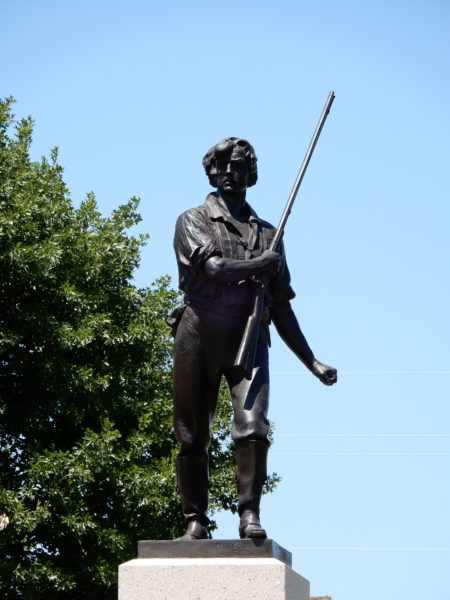
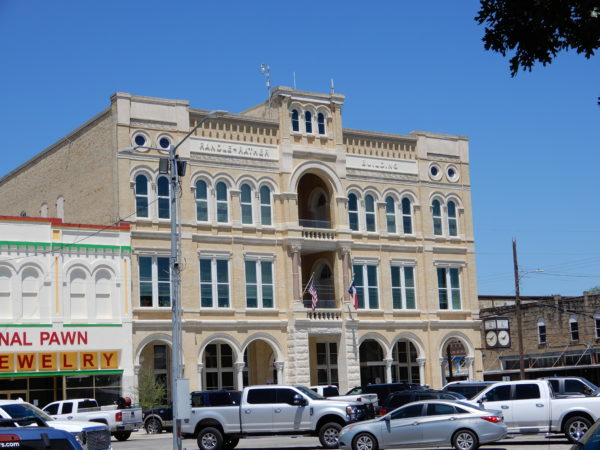
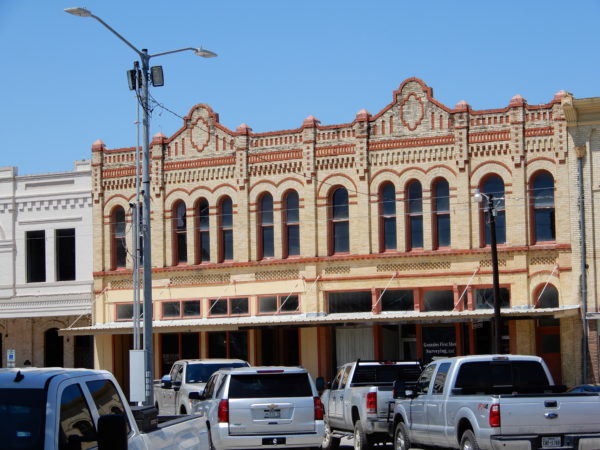
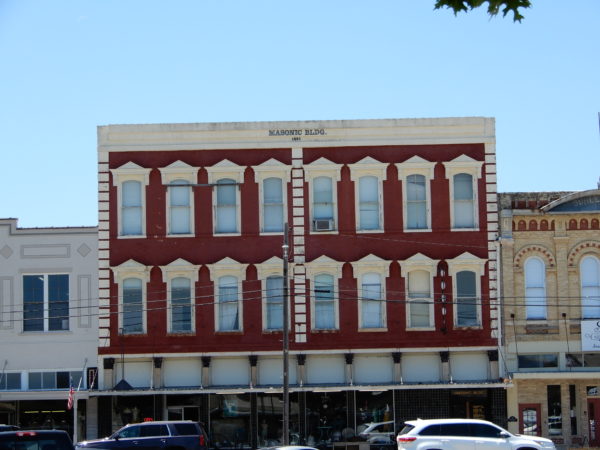
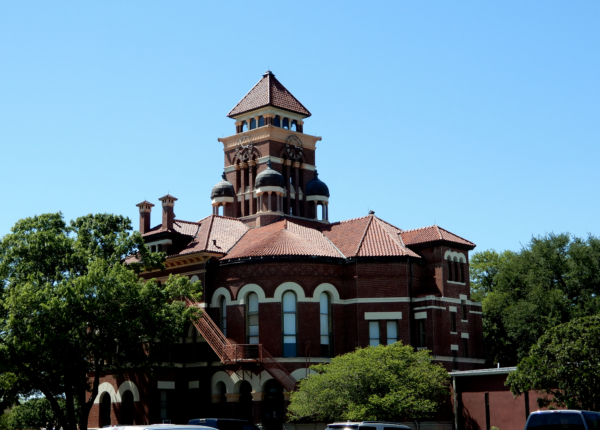
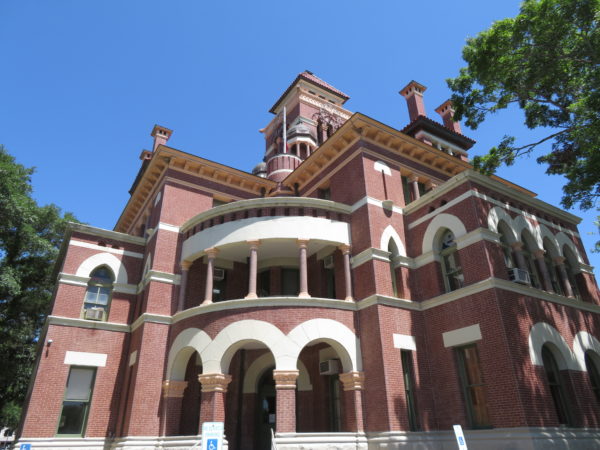
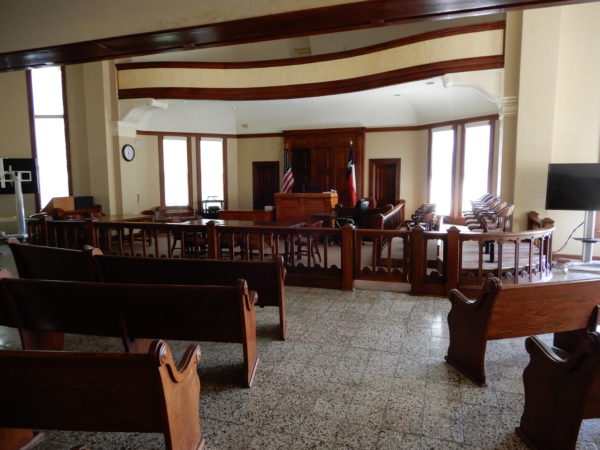
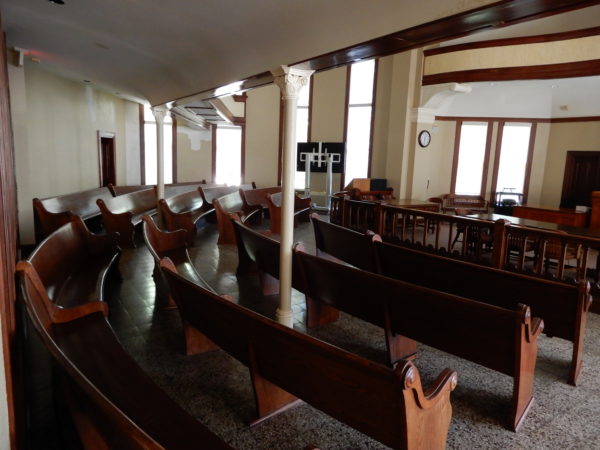
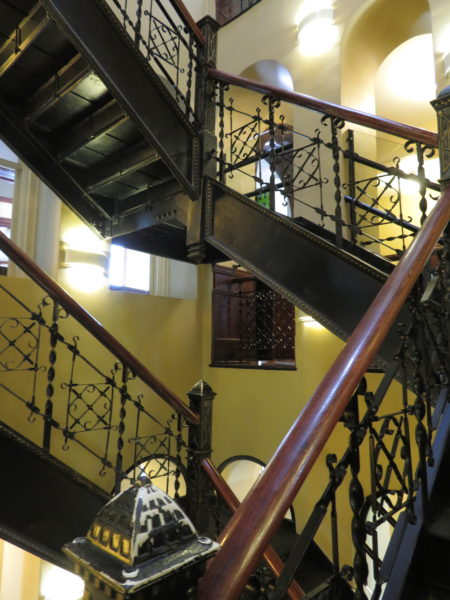
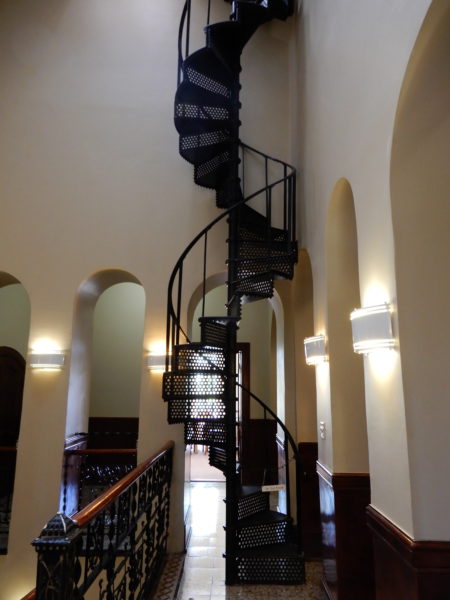
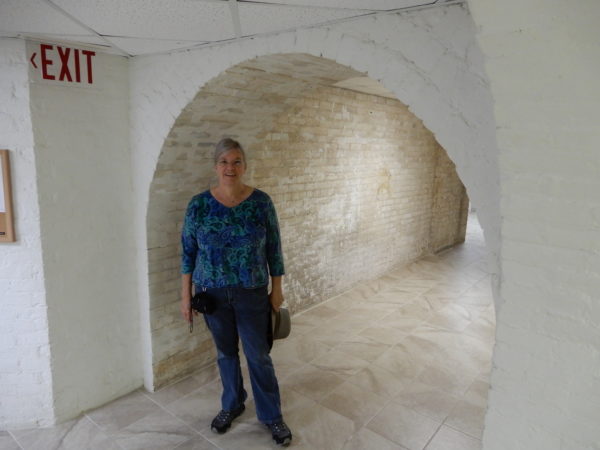
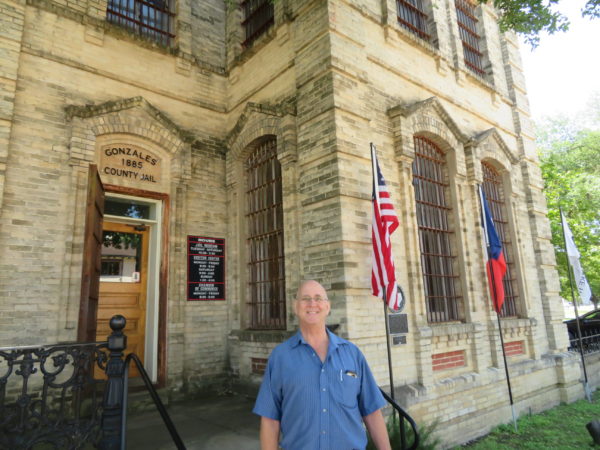
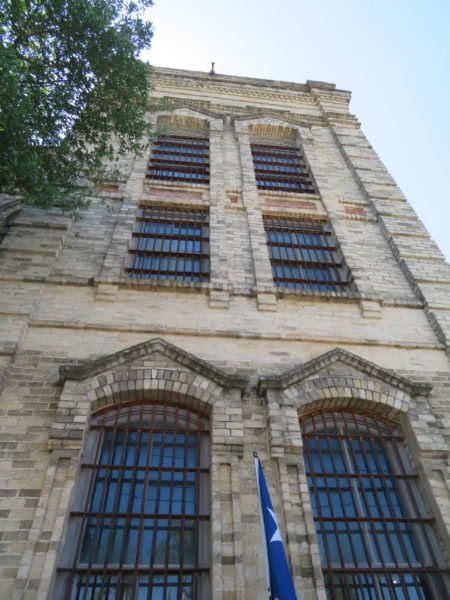
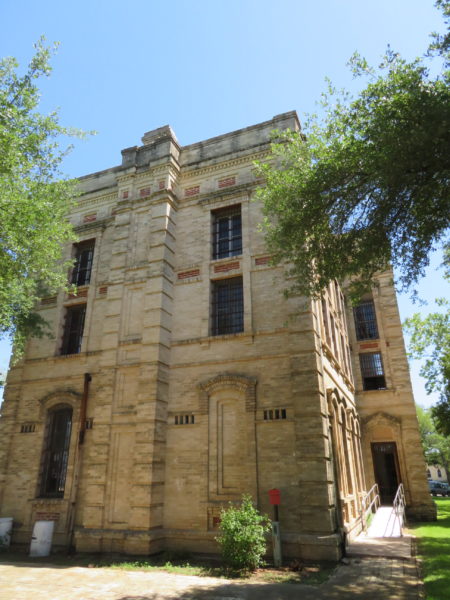
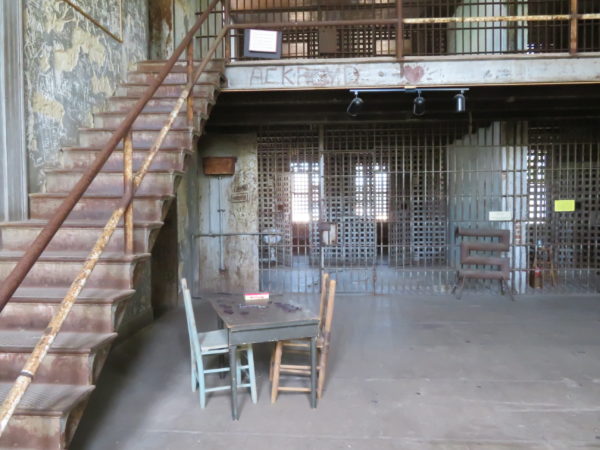
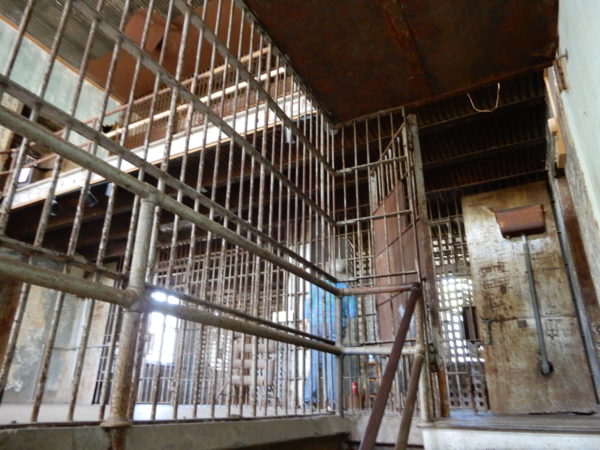
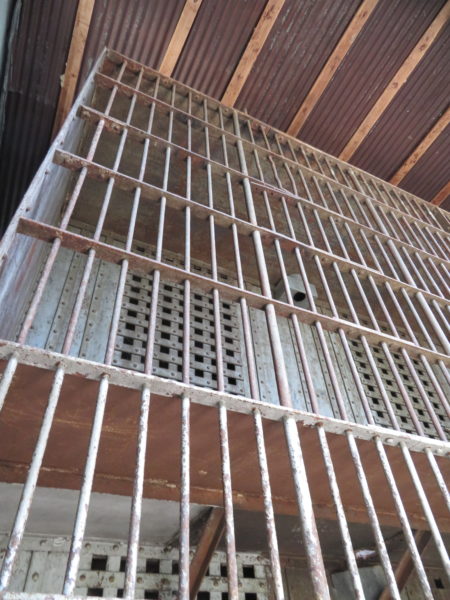
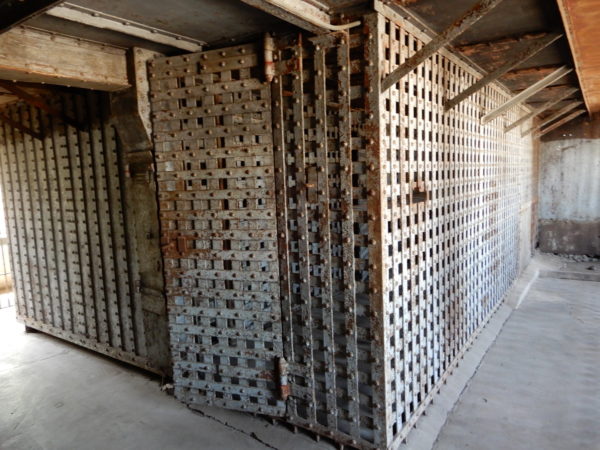
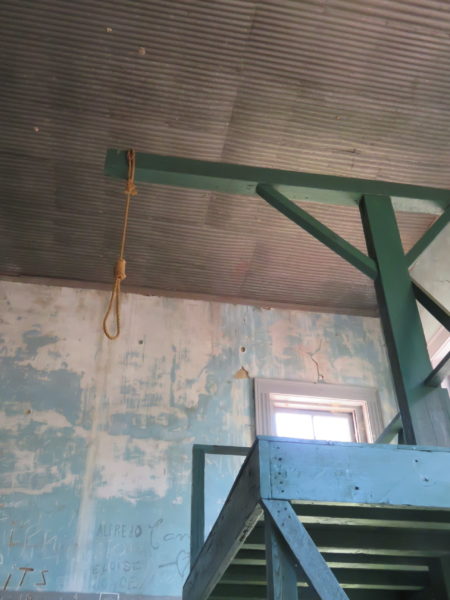
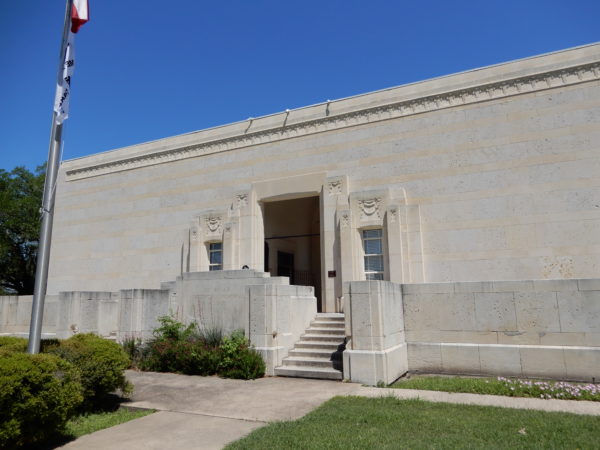
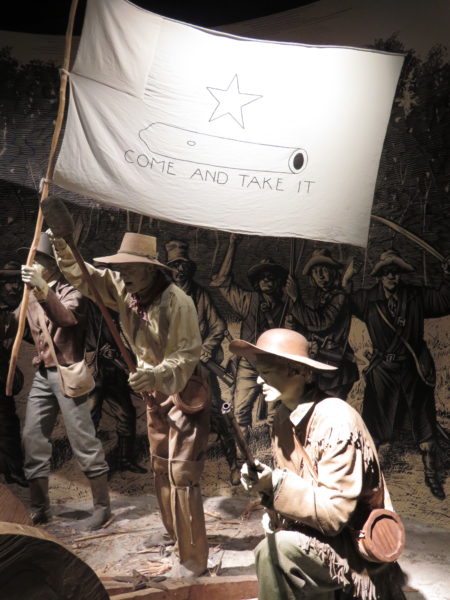
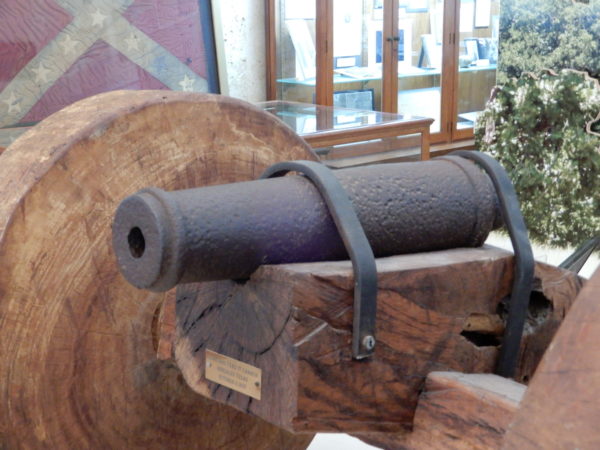
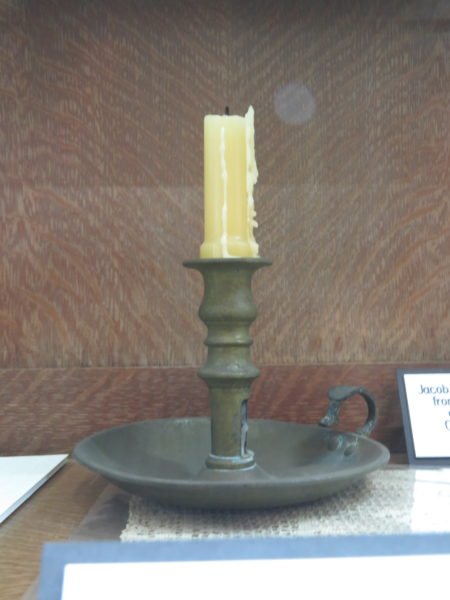
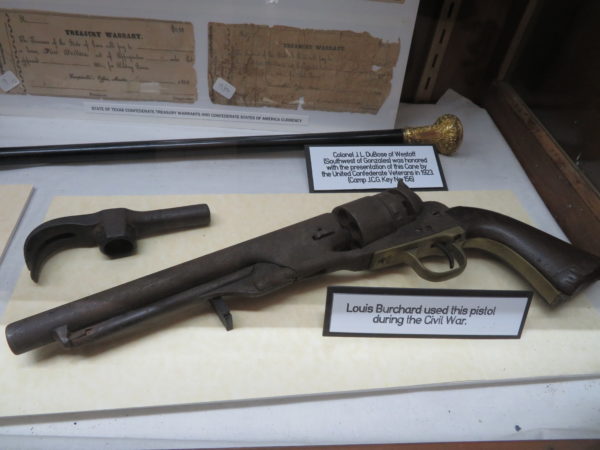
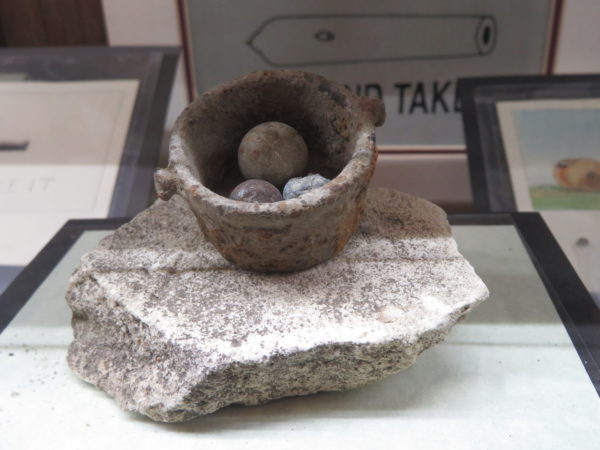
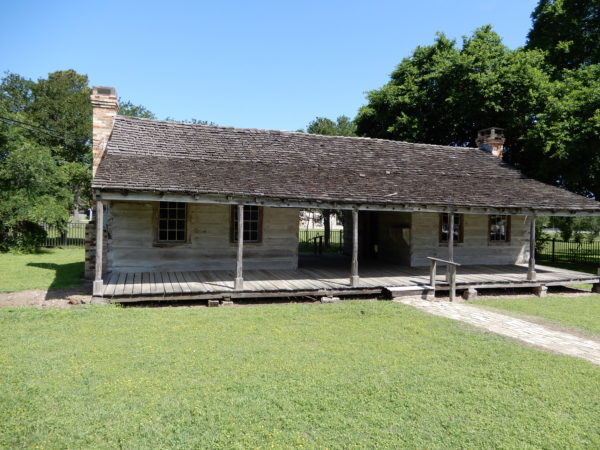
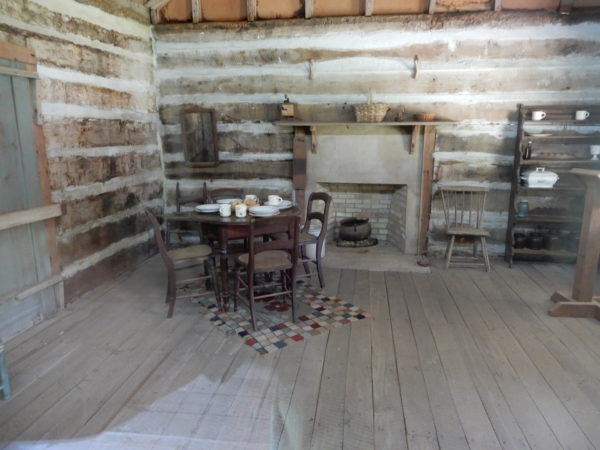
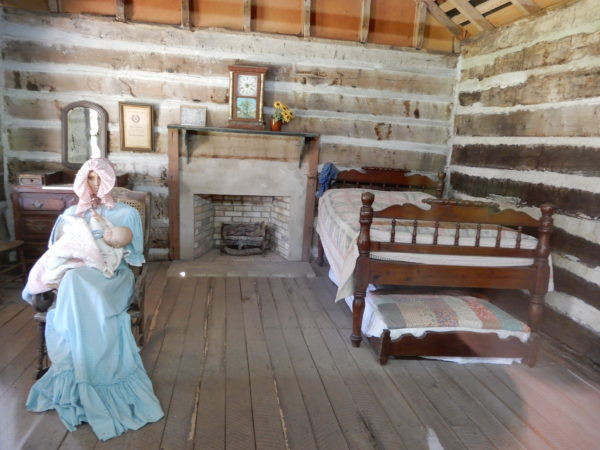



0 Comments